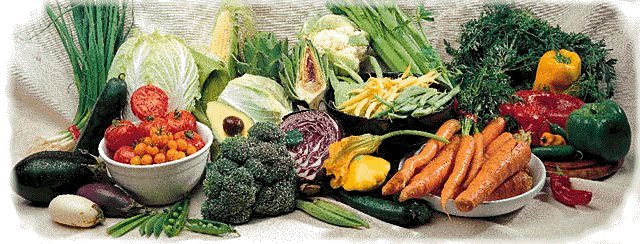Veggies in your garden and on your table is worth the effort and builds strong immune systems. It is the best thing you could plant for your health!


The vegetable garden has traditionally been located in an area separate from other parts of the landscape because it was considered unsightly. With proper planning, however, the garden can be both functional and attractive.



Ten steps to begin an organic garden even if you have no gardening experience. The key elements are some sun, soil and water.
Minimum tools needed. A shovel and rake!
1. Stop applying all pesticides and weed killers to the soil in and around your entire garden. No exceptions.
2. Start small, 50 square feet for example. Find the spot that ideally has sun all year in your yard. If it's shaded part of the year, that's OK too. Avoid the area next to buildings or fences because of possible contamination of the soil by paint, heavy metals or chemicals.
3. Remove whatever debris is covering the dirt including rocks larger than a fingernail. If plants already grow there that you want somewhere else, dig them out with the shovel and save them off to the side.
4. Cover your gardening area with organic material such as leaves, dried grass and fine plant material from your own or other's non-pesticide sprayed gardens.
5. Get a bucketful of good compost from someone else's garden or crumbly black sweet-smelling soil from under forest trees. Spread this thinly all over your garden. You will be inoculating your soil with all manner of soil organisms, little bugs, worms and other beneficial life forms that are going to do most of the work for you if you give them the chance.
6. Use the pick or shovel to mix the top 3 inches of soil and organic material. Burying the organic material any deeper just kills the critters and wastes your energy.
7. Keep the soil damp like a wrung out sponge, not soggy.
8. Never walk on your soil. Make a kneeling board out of a small piece of scrap plywood to avoid compacting the soil and use an old cushion to save your knees. Create the minimum width paths to be able to reach across the soil without too much leaning.
9. Obtain vegetables in 4" square pots, a common size, or plants from friends. pots. Dig a hole slightly larger than the rootball, squeeze the sides of the pot to unstick the plant, fluff it's roots sideways and plant it. Mulch around it with organic material to keep the soil moist underneath it. Water the root ball.
10. Start your own compost heap in a corner of the garden. Skip the gimmicks, tumblers, boxes and devices. Just heap up all the clean organic material that you can get and mix it up occasionally. Apply the compost periodically to the soil around your plants or use it to start your own seeds.
No comments:
Post a Comment